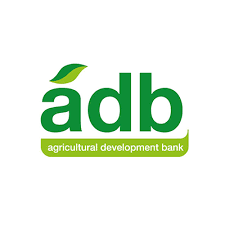ADB records 10% CAR at end-Q3 2022; below BoG’s 13% minimum requirement
Capital Adequacy Ratio (CAR) of state-owned Agricultural Development Bank (ADB) at end-Q3 2022 stood at 10.46%, 2.54 percentage points less the 13% minimum CAR requirement by the Bank of Ghana (BoG).
The bank’s Q3 2022 CAR indicates a further drop in its adequacy ratio when compared to the Q3 2021 CAR of 12.99%.
With the bank’s CAR breaching the 13% minimum CAR requirement by the Central Bank, ADB is likely to struggle in its capability of making provisions to cover potential losses incurred due to bad loans and protect depositors’ funds.
The bank, given its low CAR is very close to being insolvent.
The capital adequacy ratio (CAR) is a measurement of a bank’s available capital expressed as a percentage of a bank’s risk-weighted assets and liabilities.
Capital Adequacy Ratios mandate that a certain amount of the deposits be kept aside whenever a loan is being made. These deposits are kept aside as provisions to cover up the losses in case the loan goes bad.
A careful examination of the bank’s Q3 2022 Financial Statement by norvanreports, further reveals that ADB’s non-performing loans (NPLs) exceeds the industry’s average by 11%.
NPLs of ADB at end-Q3 2022 stood at 25.08% above the industry’s average of 14%.
The bank’s 25.08% NPLs is however an improvement on the 30.35% NPLs recorded same period last year – Q3 2021.
To further reduce its NPLs, the bank needs to put in place very robust loan recovery strategies.
Within the review period, the bank’s total assets value grew to GHS 7.17bn from the previous year’s figure of GHS 6.17bn.
Increments in ADB’s cash and cash equivalents and loans and advances to customers, accounted for the surge in total assets value.
Cash and cash equivalents grew to GHS 1.55bn from GHS 656m, loans and advances to customers grew to GHS 3.20bn from GHS 2.17bn.
Value of the bank’s investment securities however, declined from GHS 2.51bn to GHS 1.55bn within the review period.
Liabilities of the bank driven mainly by deposits from customers (GHS 5.23bn) also within the review period grew to GHS 6.19bn from GHS 5.23bn in Q3 2022 and Q3 2021 respectively.
Recorded profit for the period ended Q3 2022 was GHS 41.8m, a huge decline from the GHS 90m profit recorded at end-Q3 2021.








